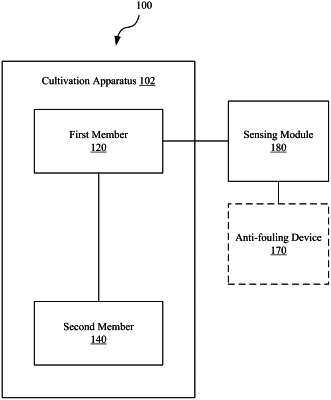| CPC G01N 33/1826 (2013.01) [B63B 22/20 (2013.01); B63B 35/00 (2013.01); B63B 79/15 (2020.01); G01N 21/645 (2013.01); H04N 23/50 (2023.01)] | 10 Claims |

|
1. A method, comprising:
releasing a deployment of passive substrates into a portion of a body of water, the passive substrates being seeded with a target product, the deployment including a sensor buoy, the sensor buoy including a first member configured to at least temporarily maintain a positive buoyancy of the sensor buoy, a second member seeded with the target product, and a sensing module having a sensor oriented toward at least a portion of the second member;
obtaining sensor data associated with at least one characteristic of the target product of the second member;
allowing the passive substrates and the target product seeded thereon to sink as a result of the passive substrates transitioning from a positively buoyant state to a negatively buoyant state;
determining, based at least in part on the sensor data, an amount of biomass accumulation associated with the target product of the second member when the passive substrates transition to the negatively buoyant state; and
determining a carbon sequestration capacity associated with the target product of the passive substrates based at least in part on the amount of biomass accumulation associated with the target product of the second member.
|